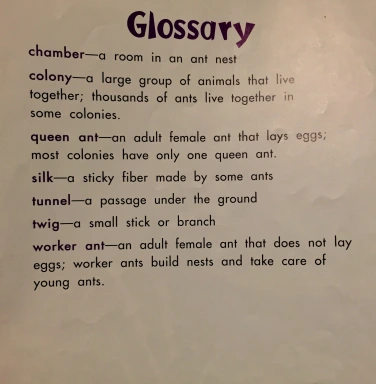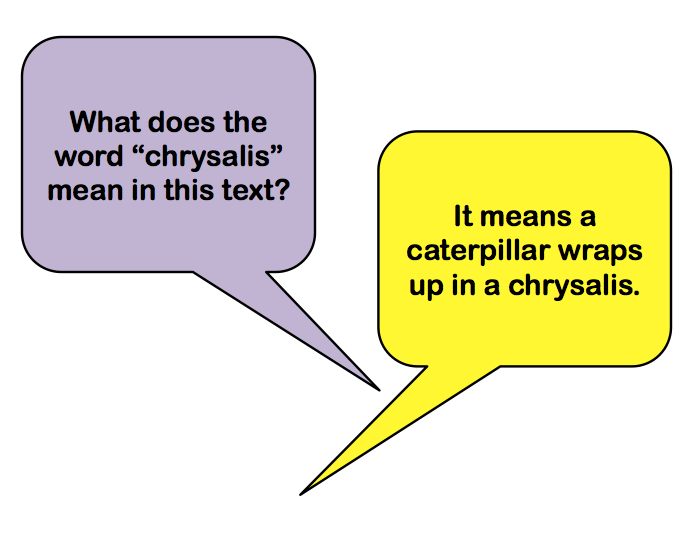Sound familiar? Students give an example or a description when you ask what a words mean. Yeah, a chrysalis is a chrysalis that the butterfly wraps up in! You know they have the right idea, but they can’t quite get it out.
Defining new vocabulary is something that can be difficult for elementary students. Often, instead of a definition we get a description or an example, as seen above. Much like my skill spotlight on retelling, this is a skill that seems easier than it actually is.
The way informational texts deal with vocabulary varies widely. When students struggle with this skill, choosing the right texts becomes very important. Today we’ll take a look into tiers of vocabulary and choosing texts to support students
Tiers of Vocabulary
The Common Core State Standards Appendix A discusses the three tiers of vocabulary. All three tiers are vital to reading comprehension, but “learning tier 2 and tier 3 words typically requires more deliberate effort…” (Appendix A).
The standards call for special attention to Tier 2 words. These are words that are used across content and topics and are generally not defined in context, making them both more usable in daily life, and harder to figure out. (That’s a post for another day!)
Beginning in second grade though, the standards also call for students to be able to determine the meaning of Tier 3, or domain-specific, vocabulary words.
How do I pick books for tier three vocabulary practice?
If you’re starting to pick up a theme for this blog, you know that I’m going to say text selection matters. Just handing students any old nonfiction text when they are struggling with defining tier three words isn’t nearly deliberate enough on our part.
How tier three words appear in the text makes a huge difference in the level of effort required to determine their meanings.

Here are some common scenarios in which tier three vocabulary appears, listed from easier scenarios to harder.
Definition appears in a text box on the same page that the word is found in context:The definition is stated explicitly, so students don’t have to infer what a word means from context. For most students, this makes this a fairly easy scenario in which to define a new word. (Keep in mind, though, that for students who tend to skip over text features, this would be a more difficult scenario).

Embedded definition in context with picture support: While students still don’t have to infer a definition, typically these definitions are contained in clauses within a complex sentence. Navigating this sentence structure can create more of a challenge, however, pictures that give a visual of the new word can compensate for this.

Embedded definition without picture support: Just like in the example above, students don’t have to infer a definition, but they do have to navigate trickier sentence structure, except this time, without picture support.

Definition can be inferred from context and picture support: This scenario is slightly harder. The sentence doesn’t define the word directly, but contains information that would help the reader infer a definition. The picture also contains helpful information that would support students in their attempt to define the word.

Definition can be inferred from context (no picture support):

Use of a glossary is necessary*: In a big ol’ pile of nonfiction ranging from first to fifth grade levels, I couldn’t find an example of a tier three word that could ONLY be defined using the glossary. I did find, though, that some tier two words fit this scenario. This is tough because readers have to realize a word is new to them, check for clues on the page where the word is located, then check for a glossary.


What are your best tips for helping students with new vocabulary in nonfiction text? Leave them in the comments!
